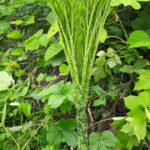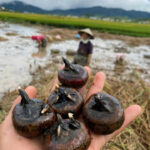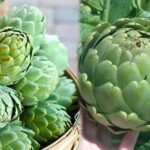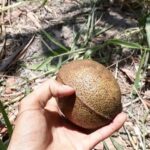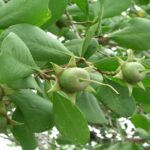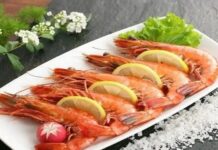The plant’s leaves are palmate, typically consisting of three to five leaflets that are arranged alternately. The leaves are a glossy dark green on the upper surface and smooth on both sides, with large serrations along the edges. The veins and stalks feature spines, and the central leaflet is usually larger than the others, creating a distinctive shape.
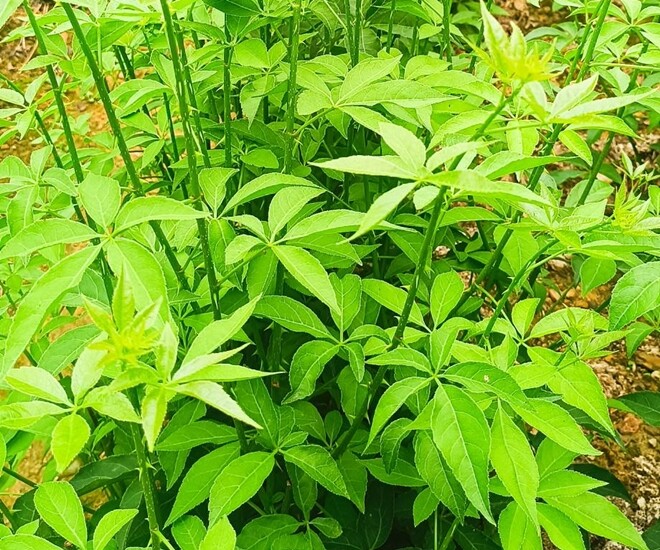
In the autumn (around September to November), the plant starts to flower with small clusters of pale greenish-white blooms. This is followed by the appearance of black berries in December to January.
Despite its sharp spines, the young shoots of Pentapanax leschenaultii are tender and edible. The taste is sweet with a mild spiciness, and it has a cooling property along with a delicate fragrance that stimulates the palate. People often collect the young shoots, about 5–7 cm long, wash them, and prepare them in various dishes.
This vegetable can be stir-fried, boiled, or made into soup. However, the most classic dishes are stir-fried Pentapanax leschenaultii shoots with eggs and stir-fried shoots with pork belly.
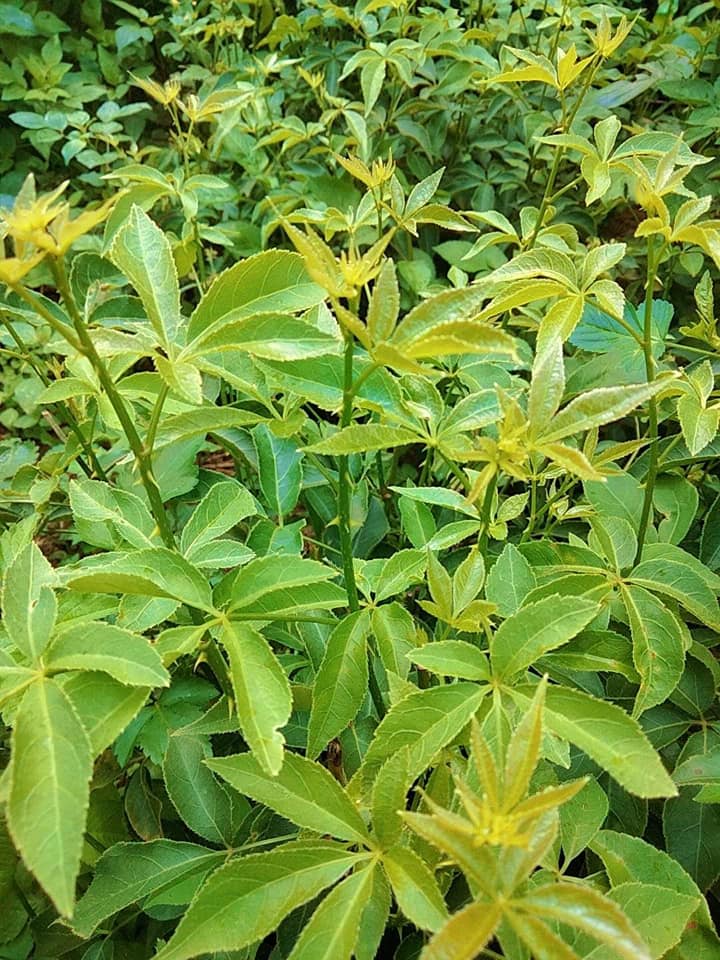
Pentapanax leschenaultii is native to northern provinces such as Lang Son, Ha Giang, Cao Bang, and Lao Cai, where it used to grow wild. In addition to Vietnam, this plant is also found in China, Japan, India, Laos, and the Philippines.
However, this vegetable has now become a delicacy sought after by city dwellers. In the market, Pentapanax leschenaultii is typically sold at a price of 60,000 VND per kilogram.
Not only is Pentapanax leschenaultii edible, but it is also recognized as a valuable medicinal herb in traditional Eastern medicine. The root bark and stem bark are commonly used as remedies, harvested in spring or autumn. After harvesting, the medicinal parts are slightly fermented to enhance their aroma and then dried.
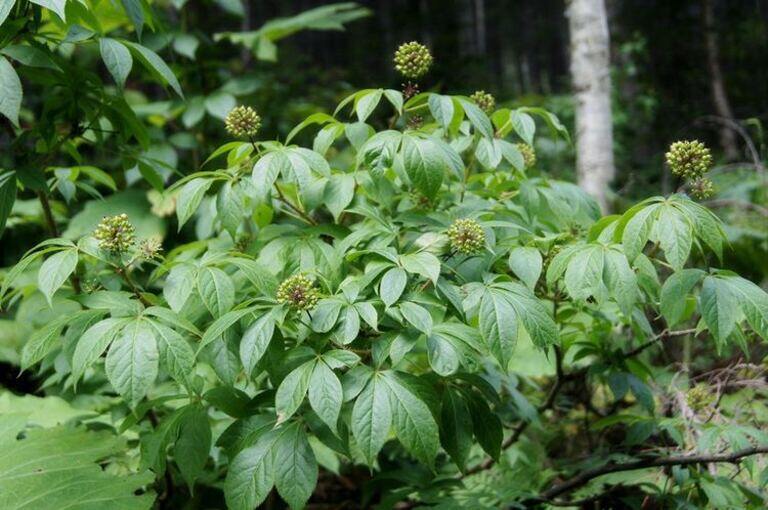
According to traditional medicine, Pentapanax leschenaultii is considered even better than ginseng. It is believed to have tonic effects, strengthening the body, bones, and tendons. It is also used to clear heat and detoxify the body and is applied in the supportive treatment of rheumatism, back pain, muscle aches, male sexual dysfunction, and female yin deficiency.
Modern research has confirmed that Pentapanax leschenaultii can boost the body’s immune system, stimulate the central nervous system, improve cerebral blood flow, dilate blood vessels, and help lower blood pressure.
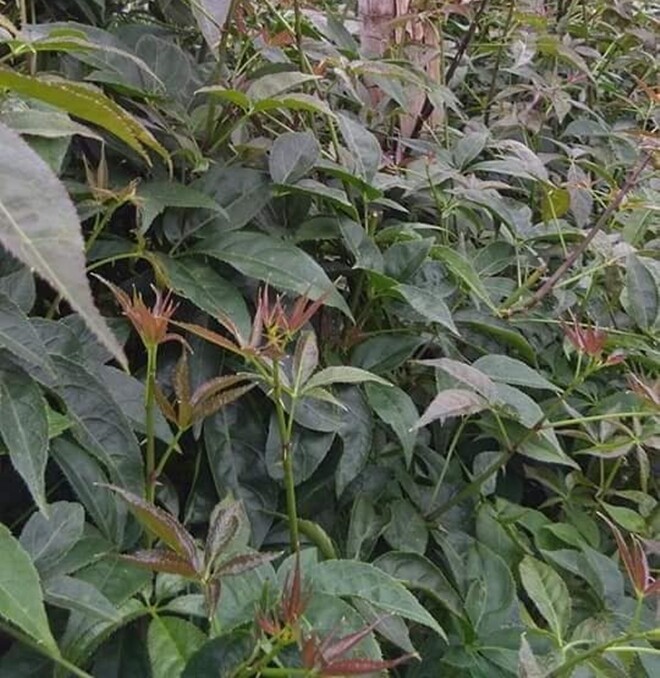
Cultivation and Care of Pentapanax leschenaultii
Pentapanax leschenaultii is a robust plant with strong growth potential and resistance to pests and diseases. It thrives in cool climates and well-drained soil.
Growing Pentapanax leschenaultii does not require advanced techniques. Propagation can be done by cutting semi-hardwood stems about 10–15 cm long and planting them in pots with slightly moist soil. After about 10–15 days, the cuttings will take root. Alternatively, you can purchase young plants from nurseries, typically priced between 30,000 and 50,000 VND per plant, depending on the size.
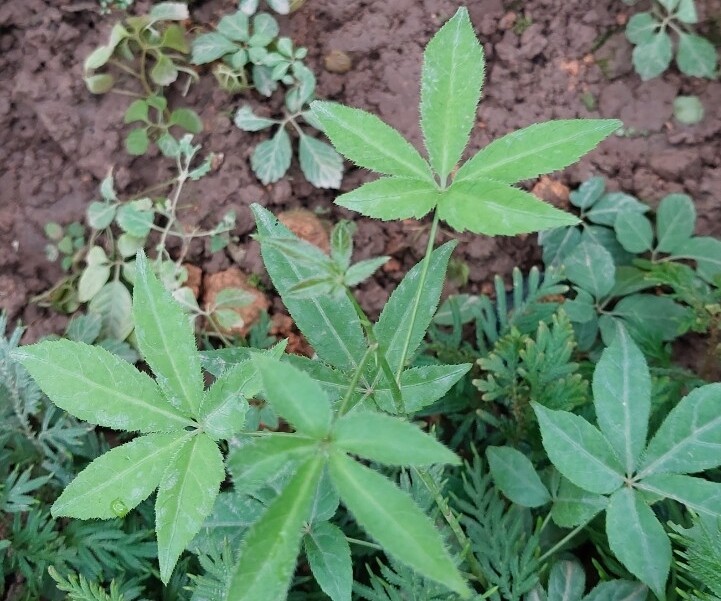
Pentapanax leschenaultii is adaptable to various soil types, as long as drainage is good. When planting, it is recommended to add a small amount of manure to promote faster growth. This plant prefers sunny locations, so ensure it receives ample sunlight.
The plant usually sheds its leaves and becomes dormant during winter. In spring, it will sprout new shoots.
Pentapanax leschenaultii is a long-lived perennial with an exceptional regenerative capacity. If the plant becomes old and woody, cutting it down will stimulate new growth from the roots, with a success rate of almost 100%.
Underground Delicacies: A Tasty Trek from North to South Vietnam.
The humble root vegetable, often unassuming in appearance and with a tendency to cause an itchy throat, is a culinary delight that spans the length of Vietnam. From the north to the south, this underground specialty is a beloved treat, cherished for its unique flavor and versatility in local dishes.
The World’s Fiber-Richest Vegetable, Recognized by the US: Abundant in Vietnam, Yet Underappreciated.
“The humble beetroot is a powerhouse of nutrients and is touted as the world’s richest source of nitrate. This vibrant vegetable is widely cultivated and consumed in Vietnam, with over a thousand varieties grown across the country. From vibrant purple roots to vibrant green leaves, beetroots are a versatile ingredient in the kitchen and a nutritional powerhouse. Read on as we uncover the secrets of this superfood and explore why it’s a staple in Vietnamese cuisine and traditional medicine.”

























